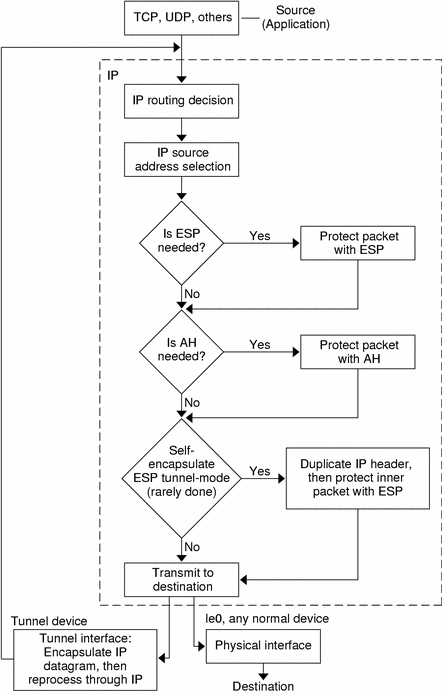Introduction to IPsec
IPsec provides security mechanisms that include secure datagram authentication and encryption mechanisms within IP. When you invoke IPsec, IPsec applies the security mechanisms to IP datagrams that you have enabled in the IPsec global policy file. Applications can invoke IPsec to apply security mechanisms to IP datagrams on a per-socket level.
Figure 1–1 shows how an IP addressed packet, as part of an IP datagram, proceeds when IPsec has been invoked on an outbound packet. As you can see from the flow diagram, authentication header (AH) and encapsulating security payload (ESP) entities can be applied to the packet. Subsequent sections describe how you apply these entities, as well as authentication and encryption algorithms.
Figure 1–1 IPsec Applied to Outbound Packet Process

Figure 1–2 shows the IPsec inbound process.
Figure 1–2 IPsec Applied to Inbound Packet Process

- © 2010, Oracle Corporation and/or its affiliates
